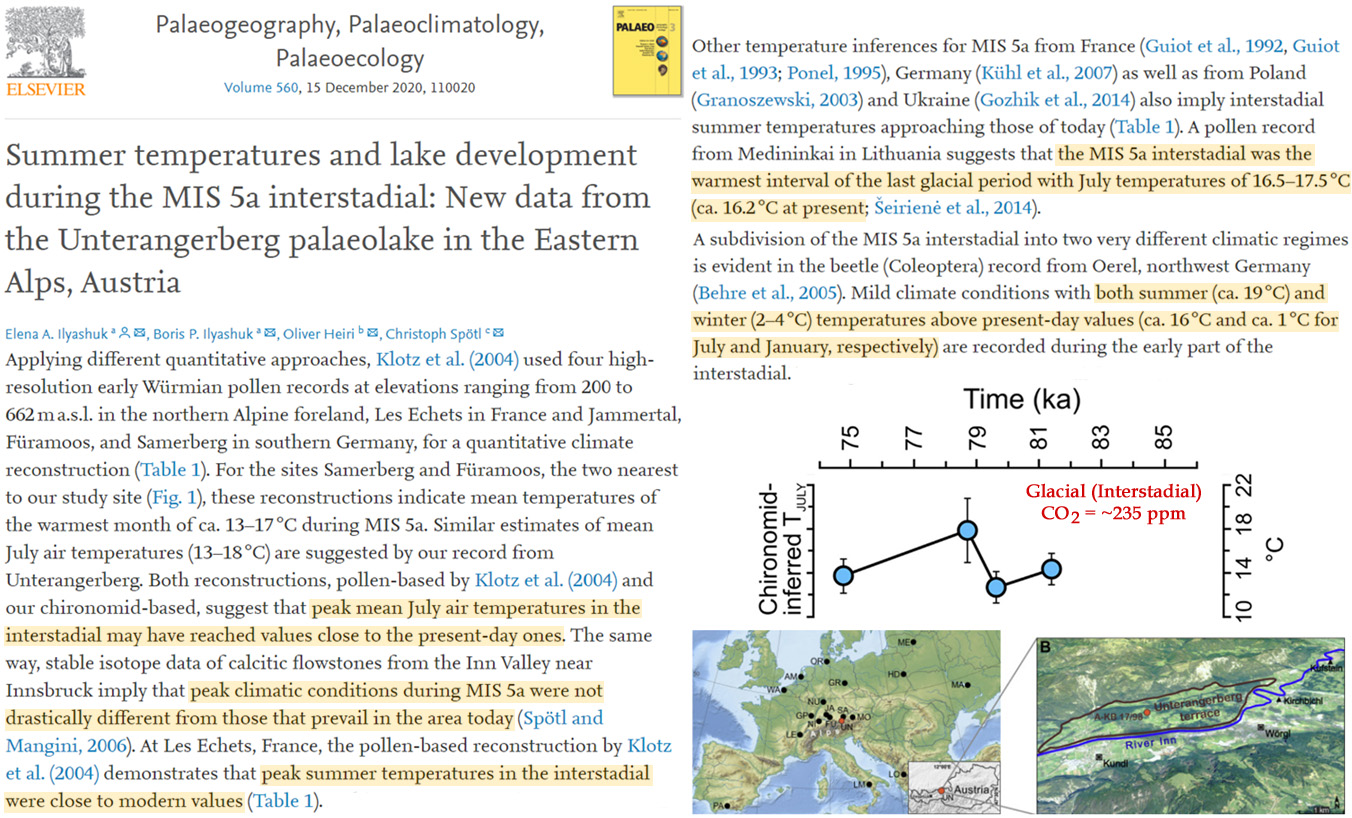By Kenneth Richard
In a “major revision” to the “long-standing view,” scientists are increasingly concluding the last glacial had summers “several degrees” warmer than today, with climate conditions warm enough to allow year-round grass grazing by horses, antelope, gazelle…in Siberia, Alaska, and north of the Arctic circle. Multiple degrees warmer glacial temperatures pervaded both hemispheres.
The “long-standing view” is the current interglacial climate is distinctly warmer and more hospitable to plants, animals, and humans than at any time during the last ice age, or glacial (from about 60,000 to 11,700 years ago). This view “has undergone a major revision” during the last 20 years of geological study according to scientists publishing in the September (2021) edition of Quaternary International.
Vegetation and tree records with specific warmth thresholds and associated ice-free temperature requirements affirm the last glacial needed to be “warmer than today by several degrees Celsius.” (Tarasov et al., 2021)
For example, these scientists document ~5°C warmer glacial climates (July) throughout Northern Asia (the study area):
“…reconstructed mean July temperatures above 12°C for most of the last cold stage [glacial] in the study area [throughout Northern Asia], where modern mean July temperatures are about 7°C”.
The widespread presence of grazing mammoths, horses, bison, deer, antelope, gazelle…in Siberia and Alaska and well north of the Arctic circle imply “year-round grazing grounds.” This requires warmer temperatures and more pervasive ice-free grass-grazing ranges than exist today.
So, contrary to the long-standing view of a generally colder-than-present last glacial climate, there is a growing body of evidence that the distinction between interglacial and glacial climates may not be as stark as previously thought.
The CO2 concentration differential of ~180 to 200 ppm during the warmer glacial periods and 280 to 410 ppm during the colder modern period also contradict the long-standing view of higher CO2 levels accommodating warmer climates, and vice versa.
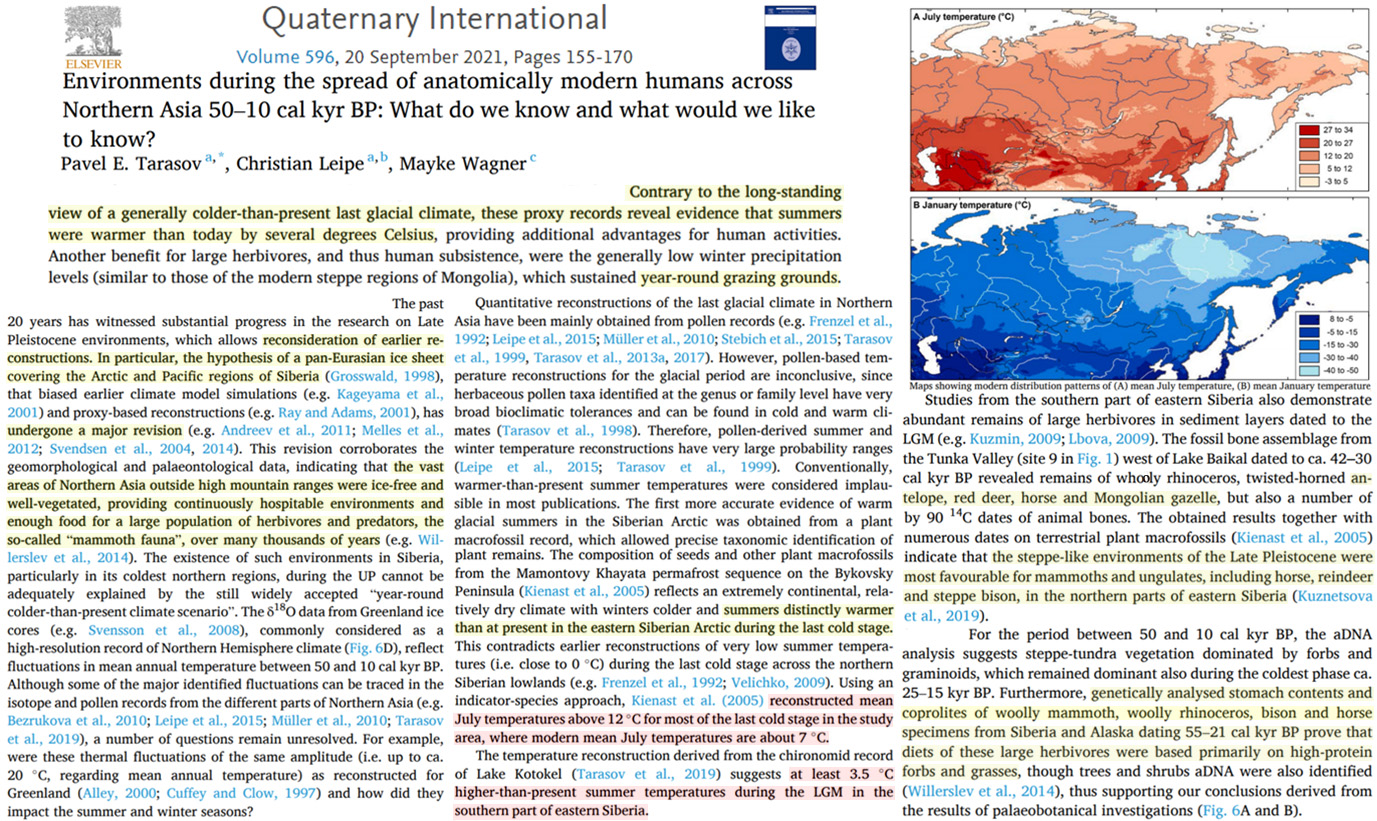
Image Source: Tarasov et al., 2021 (full paper)
Another new study (Wetterich et al., 2021) again affirms the last glacial’s Siberian Arctic was warmer than it currently is (12-15°C vs. today’s 11°C) 51, 46-44, 41 and 39-31k yrs BP. It was warm enough that horses, mammoths, bison…grazed year-round on Siberian grass.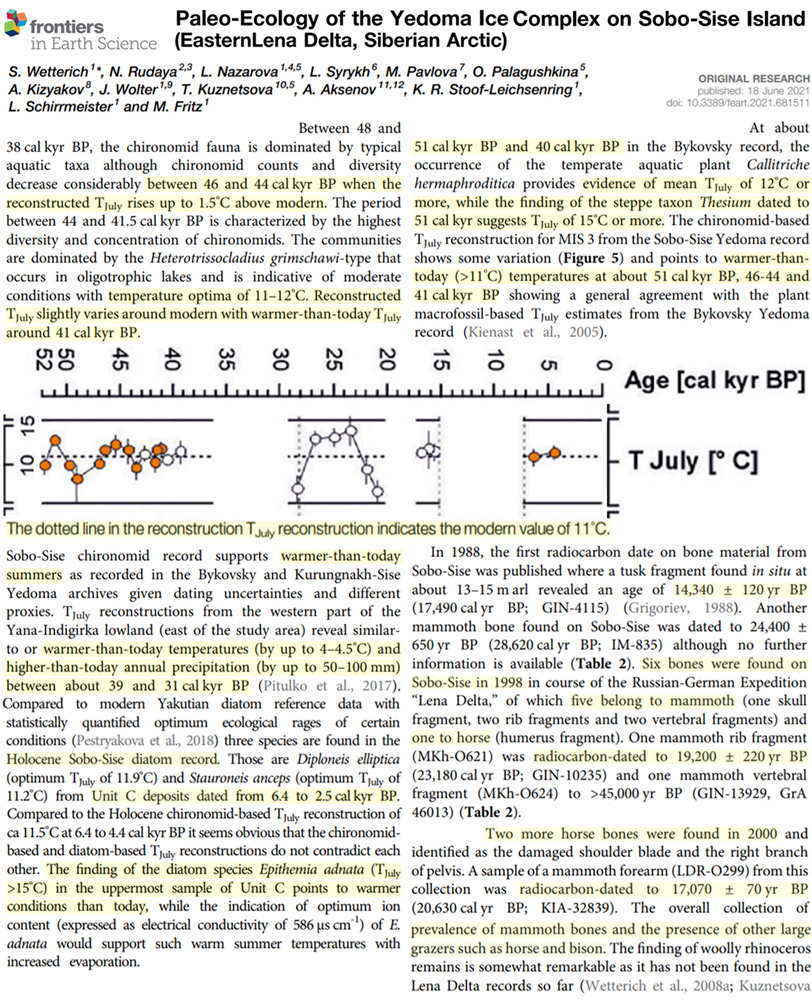
Image Source: Wetterich et al., 2021
The last glacial’s greater warmth also extended into the Southern Hemisphere according to yet another new study (Civel-Mazens et al., 2021). The Southern Ocean had “higher SST [sea surface temperatures] during the 40-24 kyrs period than during the Holocene,” with LGM [Last Glacial Maximum, 24-18 kyrs ago] temperatures peaking at 13.6°C. Today’s temperatures are ~9°C, in this region, or 4.6°C colder.
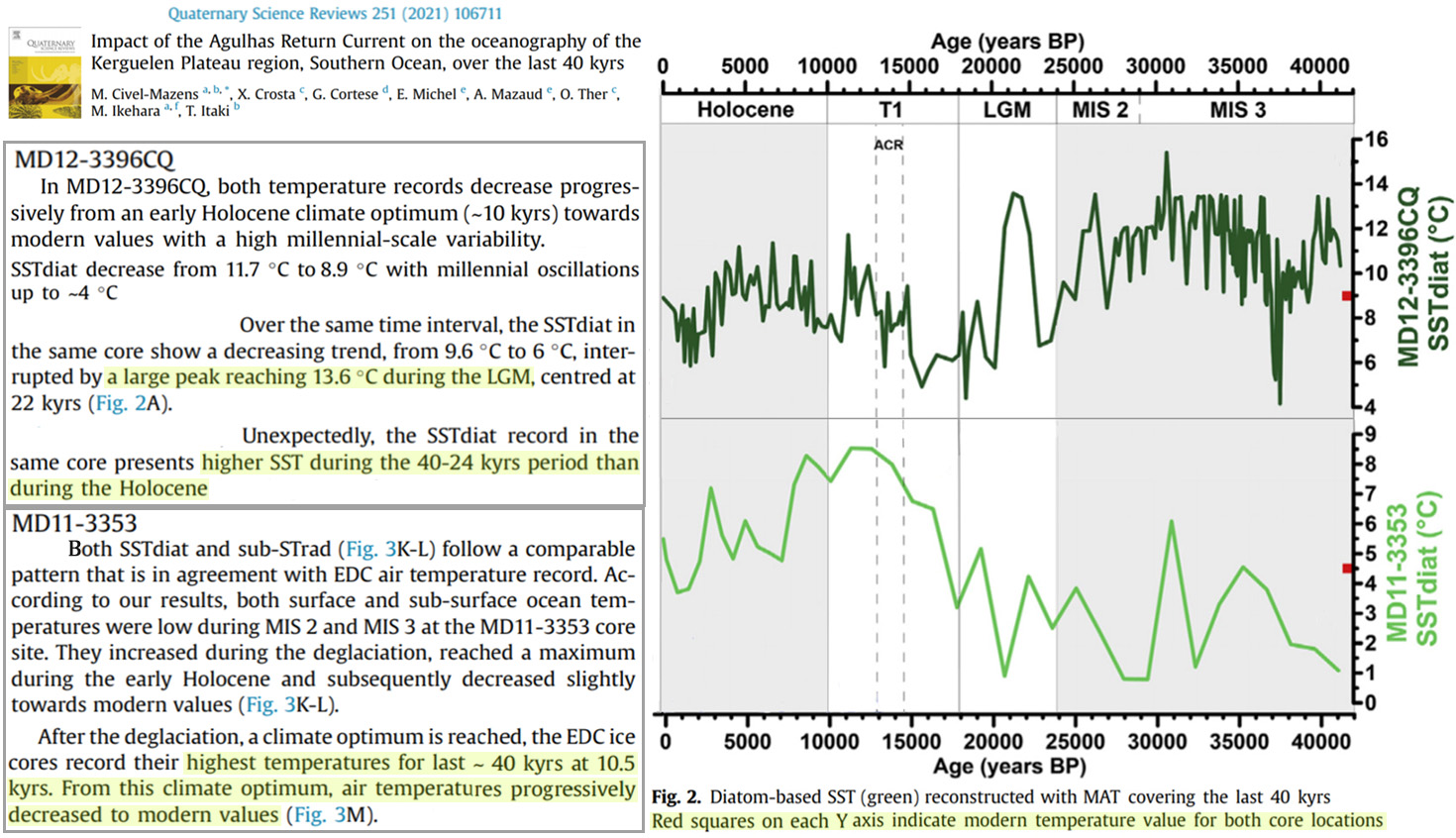
Image Source: Civel-Mazens et al., 2021
During the Last Glacial Maximum (LGM, 26-18k years before present), South Africa’s temperatures where “3-4°C higher than present in summer (and 2-4°C lower than present in winter)” (Kraaj et al., 2020).
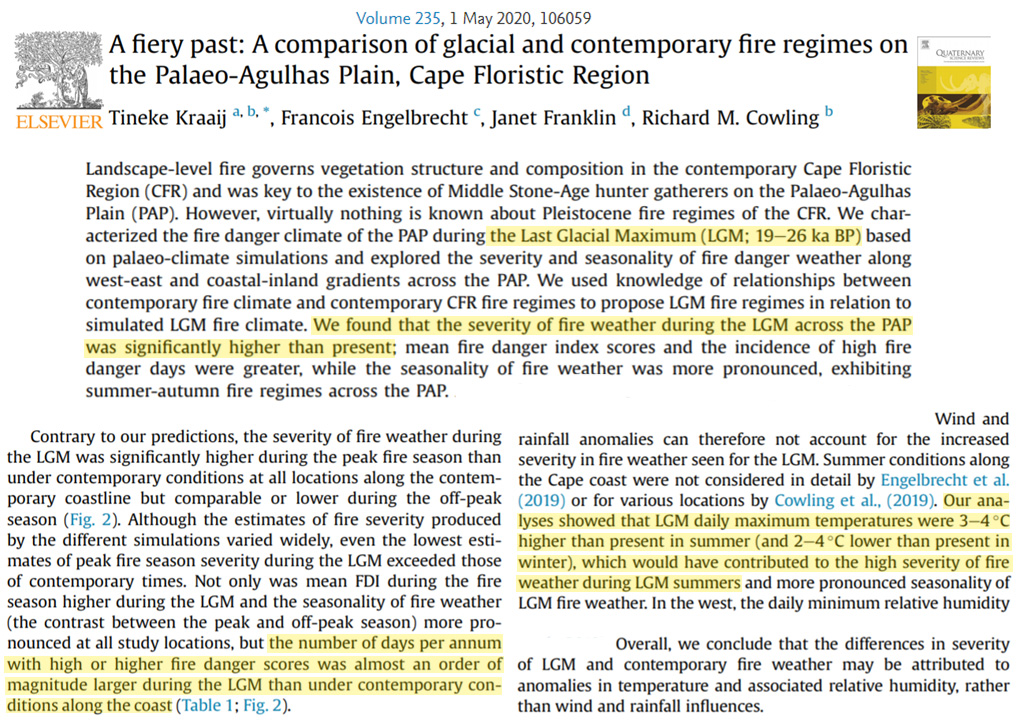
Image Source: Kraaj et al., 2020
The sub tropical South Atlantic was about 3-4°C warmer than today from about 65 to 25k years ago (Hou et al., 2020).
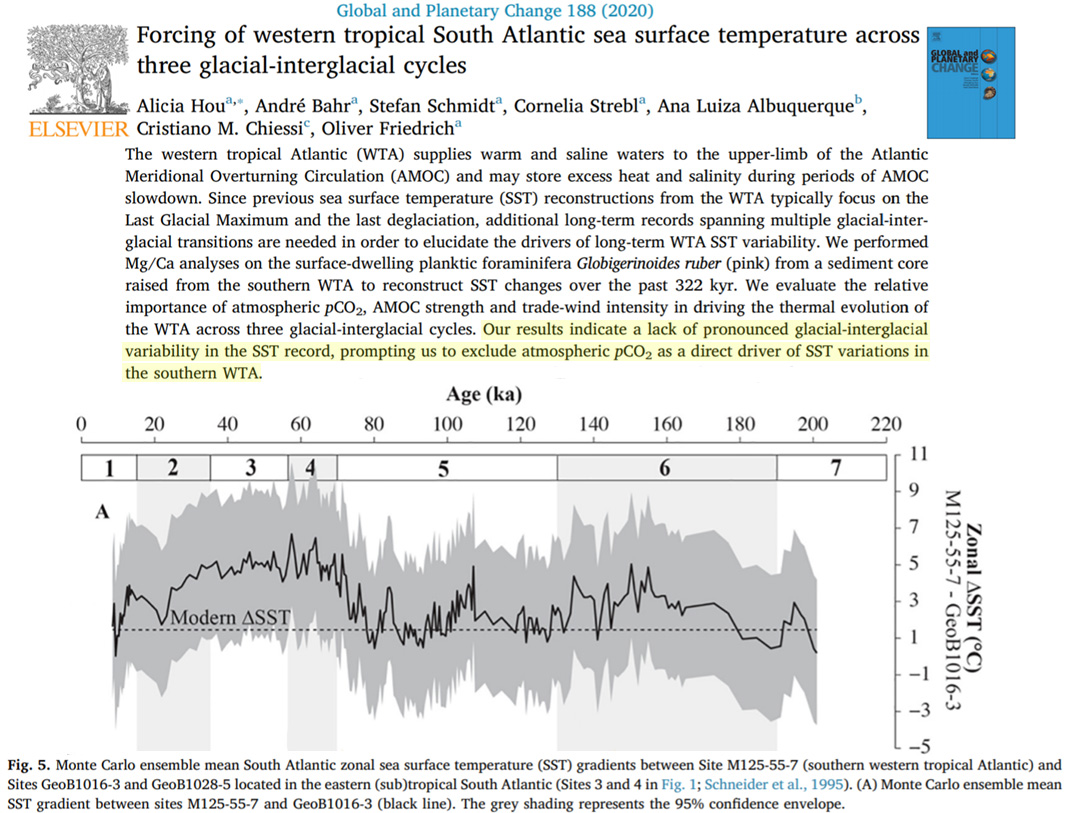
Image Source: Hou et al., 2020
In Eastern Europe, “both summer (ca. 19°C) and winter (2-4°C) temperatures [were] above present-day values (ca. 16°C and ca 1°C for July and January, respectively” during the last glacial (Ilyashuk et al., 2021).
